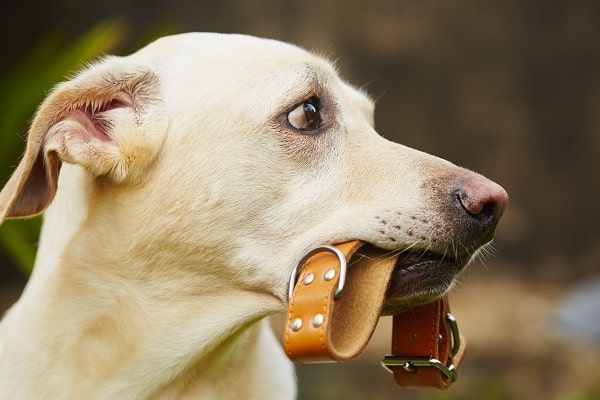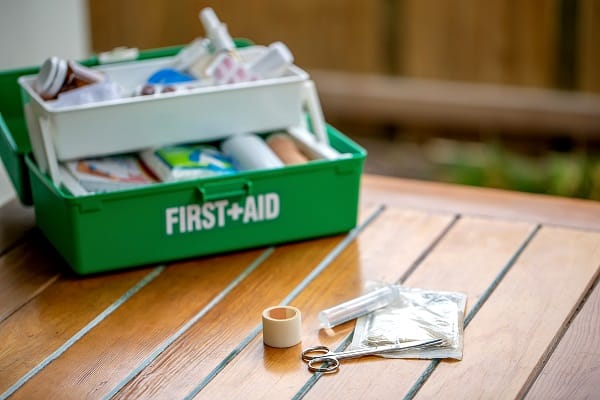Natural disasters and crises can strike when least expected, affecting not just human lives but also the furry members of the family. Recent occurrences like hurricanes and wildfires serve as stark reminders of how crucial emergency preparedness is. This post aims to offer a comprehensive guide to ensuring your pet’s safety in a crisis. From understanding the types of emergencies to crafting an emergency kit for your beloved animal companions, this post will equip you with the necessary knowledge and tools. By the end, you’ll not only be prepared to protect yourself but also to provide the best possible care for your pet’s safety in times of emergency.
Understanding The Types Of Emergencies

Natural disasters come in various forms, be it hurricanes, floods, or earthquakes. Each brings its unique set of challenges and requires specific preparations. For example, flood zones may require waterproofing essentials, while areas prone to wildfires might necessitate fireproof materials for shelters. Knowing the risks specific to your location can guide you in how best to prepare for your pet’s safety.
In addition to natural disasters, man-made crises like fires or chemical spills can pose significant threats. These emergencies may require immediate evacuation and differ fundamentally from natural disasters in that they often give less warning. Quick statistics indicate that such man-made emergencies are becoming increasingly frequent. Therefore, a well-rounded emergency plan should encompass both natural and man-made crises to keep your pet safe.
Pre-Emergency Preparation

Microchipping and having proper identification for your pets are the first steps toward preparation. In chaotic situations, pets often get lost, and microchipping increases the likelihood of a reunion. Current identification tags attached to a sturdy collar provide another layer of security. Keeping digital copies of all essential documents, including your pet’s medical records and identification, can further help in quick recoveries.
Familiarizing your pet with carriers and crates is another vital aspect of pre-emergency preparation. During evacuations or relocations, carriers become your pet’s temporary home. Conditioning them to be comfortable in these confined spaces can drastically reduce stress levels for both pets and owners when the need for rapid departure arises. Just be sure to use positive reinforcement techniques to make your pet associate their carrier with a safe, comforting space.
Building An Emergency Kit For Pets

An emergency kit acts as a lifeline in critical situations. For pets, the kit should include a sufficient supply of food and water, ideally lasting for at least three to five days. Ensure that the food is stored in waterproof containers, and remember to pack a manual can opener if the food is canned. Portable water filters or purifying tablets can also come in handy, especially when immediate access to clean water is uncertain.
First aid supplies and medication for pets are essential components of an effective emergency kit. Include basic first-aid items like antiseptics, bandages, and a first-aid guide that is specific to pets. Consult your veterinarian about any prescription medications your pet might need, and include an adequate supply. Comfort items such as blankets, a familiar toy, or a piece of your clothing can also make a significant difference in calming your pet during stressful situations.
Identifying Safe Havens

Knowing where to go during an emergency is as critical as having a well-stocked emergency kit. When choosing shelters or evacuation locations, ensure that they are pet-friendly, as not all emergency shelters accommodate animals. Keep a list of pet-friendly hotels or lodgings, especially ones that are along your planned evacuation routes. Even a small list of potential safe spaces can be invaluable in a crisis.
Another excellent option is pre-arranging a safe place for your pet with friends or family who reside in safer areas. Having a pre-established plan eliminates the stress of last-minute decision-making and ensures your pet has a familiar and comfortable environment. Keep these contacts informed and ensure you know their expectations and limitations concerning pet care in emergency situations.
Actions During an Emergency

When an emergency is imminent, taking prompt and effective action can make all the difference. The first crucial step involves securing your pets. Whether it’s placing them in a carrier or a leash, the primary goal is to keep them safe and contained. Make sure to grab your pre-packed emergency kit and important documents that you’ve stored digitally or in a waterproof container.
Evacuation orders often come with little warning. It’s crucial to decide whether to leave or stay based on the nature of the emergency and local advisories. If evacuation is necessary, already having identified safe havens can speed up your departure. Remember that if it isn’t safe for you to stay behind, it’s equally unsafe for your pets. Never leave them unattended during an emergency.
Post-Emergency Procedure

Returning home after an emergency requires careful planning. Prioritize assessing the safety of your home before letting your pets roam freely. Look for hazards such as broken glass, exposed electrical wiring, or other potentially harmful debris. Ensure fences or barriers are still secure to prevent your pet from wandering into dangerous areas.
After a crisis, it’s not uncommon for pets to show signs of stress or trauma. Monitor them closely for changes in behavior, eating habits, or general temperament. It might be necessary to consult your veterinarian for a post-crisis health check-up, especially if you notice significant behavior changes or if your pet suffered any injuries. Your veterinarian can guide you on how to ease your pet back into their normal routine.
Training Your Pet for Emergencies

Preparation isn’t just about gathering supplies; it also involves training your pet for emergency scenarios. Teaching them basic commands such as “stay,” “come,” and “sit” can be invaluable when you need to secure them quickly or lead them to safety. Obedience training creates a line of communication between you and your pet, making it easier to manage stressful situations effectively.
Socializing your pet is another aspect of emergency training. Expose them to different environments, people, and other animals to help them adapt more comfortably to new situations. Practicing emergency drills that mimic evacuation scenarios can acclimate them to the process, making it less stressful for everyone involved if a real emergency occurs. Familiarize your pet with the sights and sounds they might encounter, such as emergency vehicle sirens, to reduce panic during a crisis.
Keeping Information Updated

Having a well-prepared plan and emergency kit is a great start, but keeping everything up-to-date is essential. Regularly check the expiry dates on food and medications stored in your emergency kit. Outdated items could be ineffective or even harmful. It’s advisable to review and refresh the contents of your emergency kit at least every six months.
Similarly, make sure to keep all documents and identification information current. Update your pet’s medical records after each visit to the veterinarian and scan them into a digital format if possible. Reconfirm your arrangements with pet-friendly shelters, hotels, or family and friends periodically, ensuring your contingency plans remain viable.
Community Resources And Support

Joining community efforts for pet emergency preparedness amplifies your level of readiness. Local groups often provide workshops, resources, and communal support that you might not have access to otherwise. They can also be a valuable network during emergencies, offering immediate assistance or information on pet-friendly shelters.
Various online forums and governmental resources offer detailed guidelines and checklists to enhance your preparation plans. Organizations like FEMA and the ASPCA provide extensive materials and programs aimed at pet safety during emergencies. Leverage these resources to fill any gaps in your preparations and to stay updated on best practices.
Take Action For Your Pet’s Safety
Emergencies are unpredictable, but your response doesn’t have to be. By comprehensively preparing for potential crises, you ensure the safety and well-being of your pets, thereby offering yourself some peace of mind. This post has covered everything from identifying types of emergencies to building an emergency kit, locating safe-havens, and even participating in community resources. Being prepared isn’t just a solo effort; it’s a commitment to the family you have, fur and all. So take that step today and start laying the groundwork for your pet’s safety in times of emergency.